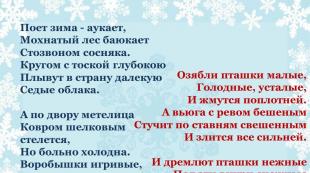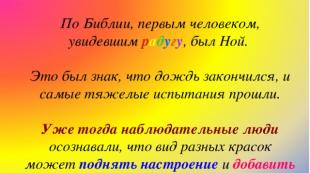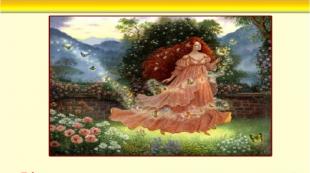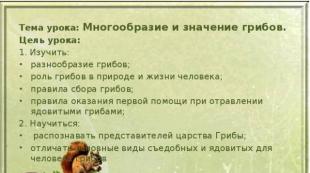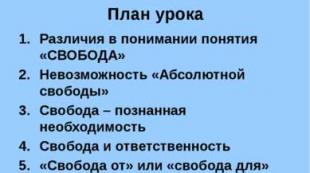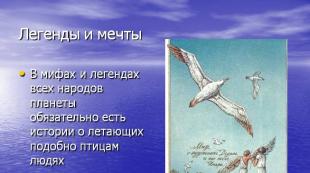How to distinguish real moss mushrooms from false ones. Difference mossiness brown chestnut and Polish mushroom
- Division: Basidiomycota (Basidiomycetes)
- Subdivision: Agaricomycotina (Agaricomycetes)
- Class: Agaricomycetes (Agaricomycetes)
- Subclass: Agaricomycetidae (Agaricomycetes)
- Order: Boletales (Boletales)
- Family: Boletaceae (Boletaceae)
- Genus: Imleria
- View: Imleria badia (Chestnut flywheel)
- Other names for mushroom:
Synonyms:
brown mushroom
pansky mushroom
Xerocomus badius
Boletus badius
Habitat and growth time:
Chestnut mushroom grows on acidic soils in mixed (often under oaks, chestnuts and beeches) and in coniferous forests - under middle-aged trees, on litter, on sandy soils and in moss, at the base of trees, on acidic soils in lowlands and mountains, singly or in small groups, not infrequently or quite often, annually. From July to November (Western Europe), from June to November (Germany), from July to November (Czech Republic), in June - November ( former USSR), from July to October (Ukraine), in August - October (Belarus), in September (Far East), from early July to late October with massive growth from late August to mid-September (Moscow region).
Distributed in the northern temperate zone, including North America, but more massively in Europe, incl. in Poland, Belarus, Western Ukraine, the Baltic States, the European part of Russia (including the Leningrad region), the Caucasus, including the North, Western Siberia (including the Tyumen region and Altai Territory), Eastern Siberia, the Far East (including the island of Kunashir), in Central Asia (in the vicinity of Alma-Ata), in Azerbaijan, Mongolia and even in Australia (southern temperate zone). In the east of Russia it is much less common than in the west. On the Karelian Isthmus, according to our observations, it grows from the fifth five-day period of July to the end of October and in the third five-day period of November (in a long, warm autumn) with massive growth at the turn of August and September and in the third five-day period of September. If earlier the fungus grew exclusively in deciduous (even in alder) and mixed (with spruce) forests, then in recent years its findings in the sandy forest under pines have become more frequent.
At the same time, the fruiting bodies are clearly oppressed - small, dull-colored, ugly in shape.

Description:
Hat 3-12 (up to 20) cm in diameter, hemispherical, convex in maturity, flat-convex or cushion-shaped, in old age - flat, light reddish-brown, chestnut, chocolate, olive, brownish and dark brown tones(during rain it is darker), occasionally even black-brown, with an even, in young mushrooms with a bent edge, in mature ones with a raised edge. The skin is smooth, dry, velvety, in wet weather - oily (shiny); is not removed. When pressed on a yellowish tubular surface, bluish, blue-green, bluish (with damage to the pores) or even brownish-brown spots appear. The tubules are notched, slightly adherent or adherent, rounded or angular, notched, of different lengths (0.6-2 cm), with ribbed edges, from white to light yellow in youth, then yellow-green and even yellowish-olive. The pores are wide, medium-sized or small, monochromatic, angular.
Leg 3-12 (up to 14) cm high and 0.8-4 cm thick, dense, cylindrical, with a pointed base or swollen (tuberous), fibrous or smooth, often curved, less often - fibrous-thin-scaly, solid, light brown , yellowish-brown, yellow-brown or brown (lighter than the cap), lighter at the top and at the base (yellowish, white or fawn), without a mesh pattern, but longitudinally striated (with stripes of the color of the cap - red-brown fibers). When pressed, it turns blue, then turns brown.
The flesh is dense, fleshy, with a pleasant (fruity or mushroom) smell and sweetish taste, whitish or light yellow, brownish under the skin of the cap, slightly blue on the cut, then turns brown, and eventually turns white again. In youth it is very hard, then it becomes softer. Spore powder olive-brown, brownish-greenish or olive-brown.

Doubles:
For some reason, inexperienced mushroom pickers are sometimes confused with a birch or spruce porcini mushroom, although the differences are obvious - the porcini mushroom has a barrel-shaped, lighter leg, a convex mesh on the leg, the flesh does not turn blue, etc. It differs from the inedible gall mushroom (Tylopilus felleus) in similar ways. ). Much more similar to mushrooms from the genus Xerocomus (): variegated flywheel (Xerocomus chrysenteron) with a yellowish-brown cap that cracks with age, in which red-pink tissue is exposed, brown flywheel (Xerocomus spadiceus) with yellow, reddish or dark brown or a dark brown hat up to 10 cm in diameter (a dry whitish-yellow tissue is visible in the cracks), with a dotted, fibrous-flaky, powdery, whitish-yellowish, yellow, then darkening leg, with a delicate red or coarse light brown mesh on top and pinkish brown at the base; (Xerocomus subtomentosus) with a golden brown or brownish greenish cap (tubular layer golden brown or yellowish greenish) that cracks to reveal light yellow tissue, and a paler stalk.
Video about Mokhovik chestnut:
Note:
A popular and tasty edible mushroom (2nd category) - especially in late autumn, when other boletes descend. The blue-blue color of the white flesh disappears when cooked. It is used in a variety of ways: fresh (in soups and roasts after boiling for 15 minutes), salted and pickled, dried (takes on a pleasant light yellow color) and frozen. According to V. Buldakov, the taste resembles a boletus. Once upon a time, unscrupulous traders tried to pass it off as dried porcini.
(lat. Boletus badius) - a type of mushroom, in various systems Classifications attributed to the genera Boletus (Boletus) or Mokhovik (Xerocomus) or allocated to a separate genus Imleria. Polish mushroom belongs to the section tubular fungi and the inside of its cap has a tubular structure.
Polish mushroom: appearance, description
- Hat 3-12 (up to 20) cm in diameter, hemispherical, in maturity convex, plano-convex or cushion-shaped, in old age - flat, light reddish-brown, chestnut-, chocolate-, olive-, brownish- and dark brown tones (during rain - darker), occasionally even black-brown, with a smooth, in young mushrooms with a bent, in mature ones - with a raised edge. The skin is smooth, dry, velvety, in wet weather - oily (shiny); is not removed. When pressed on a yellowish tubular surface, bluish, blue-green, bluish (with damage to the pores) or even brownish-brown spots appear. The tubules are notched, slightly adherent or adherent, rounded or angular, notched, of different lengths (0.6-2 cm), with ribbed edges, from white to light yellow in youth, then yellow-green and even yellowish-olive. The pores are wide, medium-sized or small, monochromatic, angular.
- Leg 3-12 (up to 14) cm high and 0.8-4 cm thick, dense, cylindrical, with a pointed base or swollen (tuberous), fibrous or smooth, often curved, less often - fibrous-thin-scaly, solid, light brown, yellowish-brown, yellow-brown or brown (lighter than the cap), lighter at the top and at the base (yellowish, white or fawn), without a reticulate pattern, but longitudinally striated (with stripes of the color of the cap - red-brown fibers). When pressed, it turns blue, then turns brown.
- pulp dense, fleshy, with a pleasant (fruity or mushroom) smell and sweetish taste, whitish or light yellow, brownish under the skin of the cap, slightly blue on the cut, then turns brown, and eventually turns white again. In youth it is very hard, then it becomes softer.
- spore powder olive brown, brownish greenish or olive brown.
Where does the Polish mushroom grow:
The Polish mushroom grows mainly in the coniferous forests of Eastern and Central Europe, but it is also found in the mountains and foothills of the North Caucasus, the Urals, Siberia and the Far East. And it can also be found in Central Asia. But in the woods middle lane Unfortunately, he is not such a frequent visitor to Russia as he would like, but nevertheless he comes across. But the Polish mushroom bears fruit throughout the mushroom season, from early June to late November , often when other noble porous mushrooms are no longer found.
The Polish mushroom is looked for near old trees. It appears around the trunks, in the gaps and clearings. Almost never found directly at the foot of the trunks. If you find yourself in a coniferous forest, go to the oldest part of it, look for clearings covered with moss, look at the slopes of ravines. They grow in small groups: if one is found, then there will be others nearby, at a small distance. "Catch" must be carefully examined for worminess. One worm mushroom in a basket will “infect” healthy ones in a few hours.
By itself, the Polish mushroom is not a small mushroom at all and some of its specimens reach impressive sizes and masses in order to be able to impress the lucky “hunter”. And the aesthetic appearance and natural beauty of this mushroom will not leave indifferent any mushroom picker, even a "wise-looking" one.
The use of the Polish mushroom:
Edible, many mushroom pickers consider its quality to be very good. It is used in many mushroom dishes and is also suitable for freezing, drying and marinating.
Take a close look at what the leg of the Polish mushroom looks like in a cross section. If holes made by pests are visible, cut the hat in half. We saw the same holes in the pulp of the cap - feel free to throw it away, if the lesions occupy a small part, cut off the damaged areas. And remember, even a Polish mushroom can become poisonous if it is old or worm-eaten.
Similar species, nutritional and medicinal value of the Polish mushroom:
In nature, has similar counterparts:
- First of all: flywheel motley (Xerocomellus chrysenteron), which differs markedly from it in its yellowish-brown cap that cracks with age, while exposing red-pink flesh;
- Secondly: flywheel green (Xerocomus subtomentosus), which also differs markedly from it in the same cracking golden brown or brownish-green cap, with light yellow flesh exposed and a lighter leg. But it’s good that both of them are edible, and besides, from his “former relatives”, so that in case of unintentional confusion, nothing criminal will happen.
According to its taste and calorie content, the Polish mushroom belongs to the edible mushrooms of the second category and it tastes very similar to borovi to (or porcini ). Although, as already noted, it is not always assigned to their genus and may also apply to flywheels. Nevertheless, no matter what, the Polish mushroom is a wonderful, tasty and very healthy mushroom, and it is a pity that it is not so often found on the path of a mushroom picker. True, this makes it even more valuable and desirable! For example, in Chinese traditional medicine, dried Polish mushrooms have long been used to lower blood and venous pressure, as well as to reduce weight or simply as a sedative. And all because recent laboratory studies have shown that Polish mushrooms contain the amino acid theanine found in green tea, for example. Why do they have antioxidant activity because theanine promotes many beneficial processes in the body, such as:
- promotes relaxation and calm;
- suppresses the negative effect of caffeine;
- increases anti-cancer immunity;
- provides a neuroprotective effect;
- lowers blood pressure;
- promotes weight loss.
Or here is such an interesting thing: the Polish mycologists and researchers themselves found that “their” Polish mushrooms are good hyperaccumulators of soil pollution, including salts of heavy and radioactive metals (mercury, cobalt, cadmium and lead) and are currently being developed the method of their application for cleaning the soil in places of its pollution (Chernobyl, Fukushima and others).
One of the most favorite mushrooms among mushroom pickers is the Polish mushroom. No wonder he is called the king of mossinessmen. This is a delicacy, it is difficult to find it, but it tops the list of edible mushrooms in terms of taste and the amount of useful trace elements. It can be eaten in different forms: it is salted, fried, boiled, dried and pickled. You can also freeze it, which makes it possible to eat it in winter.
polish mushroom
Flywheel or boletus is called this mushroom. The cap can be up to 12 inches in diameter. Its color varies from light brown to dark brown. It tastes like white mushroom. The hat is flat in a large specimen. In small fungi, it is more round. When squeezed, its color changes to a darker one. The pulp is fleshy and dense. Its value is that it does not accumulate radioactive and toxic substances.
habitats
In environmentally clean places this species grows. These are usually deciduous or coniferous forests. You can find it next to a beech, chestnut, oak or under a spruce. He prefers acidic soil. Suitable for moss and sandy soil. This specimen is also found at the foot of the mountains.
Its time is from June to November. It is found in Western Europe, the Polish boletus is collected in Russia, it is popular in the Caucasus, it is known in Asia, and it is even known in Australia. Mass collection is usually from August to September.
Cooking alcohol solution fresh Polish mushrooms, which contains polysaccharides. They have antitumor activity. Experiments on mice showed their high percentage. Spirit tincture from dried mushrooms has an antioxidant effect. This biological culture is considered one of the leaders among all mushrooms. It contains 10 vitamins.
In China, he is in a place of honor among healers. They successfully treat many diseases and increase immunity in patients. And all this is due to the content of chitin, which has a protective function.
The Polish mushroom, or chestnut mushroom, is so beautiful and tasty that many mushroom pickers rejoice in it almost like a white one. This mushroom grows until late autumn. Mokhovik is considered universal: it is fried, boiled and harvested for future use.
Polish mushroom turns blue when pressed or exposed to air
Polish mushroom - flywheel, not boletus
Polish mushroom, or chestnut flywheel, can be considered the best of the flywheels. It is interesting to see how the attitude of both mushroom pickers and consumers has changed over time. It turns out that before the chestnut flywheel was greatly underestimated. In some areas of the western republics of the USSR, it was not even collected, considering it mediocre compared to white. The attitude towards the Polish mushroom is described in the Great Soviet Encyclopedia. It confirms that in the USSR this mushroom was considered second-class, although in Western Europe it was valued and quoted as one of the best. In Western Europe, chestnut flywheel is much more common than in the Moscow region. Poland willingly exported these mushrooms, which began to be called "Polish". In any case, there is such a plausible version associated with the name of the mushroom.
The flywheel has a spongy hemispherical hat with a diameter of 4 to 15 cm, sometimes more. The edges of the caps of young mushrooms are lowered down, in old ones they are often bent up. The tubular layer changes color from whitish to greenish-yellow as it matures. The pulp, when pressed and in contact with air, turns blue in places of fracture and cuts, which is one of the hallmarks Polish mushroom. This confirms that the Polish mushroom is a flywheel and not a white mushroom.
Where and when to pick Polish mushrooms?
Polish mushroom grows until the end of October. Hot and dry weather often prevents its appearance in the forests in July and early August. The most active collection falls on the second half of August and September. However, it is the Polish mushroom that endures autumn frosts, remaining in the forest until late autumn. Mushroom pickers noticed: I found a Polish mushroom - look for others nearby. These mossiness mushrooms are especially fond of coniferous and mixed forests, in which not only spruce trees, but also pines grow. A mushroom growing in moss or on sandy soils of pine forests looks very impressive. In rainy weather, a wet flywheel cap becomes slippery.
Less experienced mushroom pickers are afraid to confuse the Polish mushroom with the satanic one. They are especially embarrassed by the yellowish leg with red-brown longitudinal fibers. The satanic mushroom has a prominent dark or lighter mesh on the surface of the stem, and the underside of the stem often turns red when damaged. This mushroom differs in many other ways.
What can be cooked from a Polish mushroom?
The Polish mushroom is fried, boiled, dried, salted and pickled. It has a fleshy pulp, which allows you to invent different dishes. By the way, in processing, the blue disappears, and the fungus acquires a whitish-yellow color. They even cook meatballs with it, passing the hat and leg through a meat grinder (or chopping it in another way) and adding an egg, onion and salt. Breaded cutlets are rolled and fried (under the lid) for about half an hour. You can quickly make delicious mushroom meatballs if you add pancake flour to finely chopped mushroom with a knife and fry until cooked in vegetable oil (odorless). The leg of the Polish mushroom also comes into play. I like Polish mushrooms boiled in a little water. I always drain the water first. At the very end, I salt and add sour cream. I leave it for one hour (“infuse”), and then serve it with boiled potatoes. Of course, before starting cooking, I cut the mushroom, including the leg, into small pieces. This flywheel can be used in the same way as a mushroom, the taste and aroma of which is a standard for a real mushroom picker.
© A. Anashina. Blog, www.site
© Site, 2012-2019. Copying texts and photos from the site podmoskоvje.com is prohibited. All rights reserved.
(function(w, d, n, s, t) ( w[n] = w[n] || ; w[n].push(function() ( Ya.Context.AdvManager.render(( blockId: "R-A -143469-1", renderTo: "yandex_rtb_R-A-143469-1", async: true )); )); t = d.getElementsByTagName("script"); s = d.createElement("script"); s .type = "text/javascript"; s.src = "//an.yandex.ru/system/context.js"; s.async = true; t.parentNode.insertBefore(s, t); ))(this , this.document, "yandexContextAsyncCallbacks");
The Polish porcini (Xerocomus badius) is sometimes confused with the boletus and closely resembles this noble mushroom. This variety of mossiness mushrooms from the Boletov family has long been classified as an elite mushroom.
The young fungus has an oval, centimeter-sized hat bent down. An adult specimen is equipped with a round and straight twenty-centimeter hat, under which there is a dense light yellow tubular layer. Over time, it softens and acquires a mustard hue. The hat itself, depending on the habitat: it can be brown, olive, brown or dark red. Its velvety surface becomes oily when it rains. Spores are greenish or olive-brown.
The hat sits on a dense, high, slightly thickened and slightly curved yellow-brown stem. It does not have a mesh pattern. It cuts easily, the flesh smells good. It rarely has worms. At the point of cut, it is first white, but quickly oxidizes and turns blue at the same time.
Polish porcini mushroom is sometimes confused with boletus, it is very similar to this noble mushroom.
Other names for the Polish mushroom
The Polish mushroom is called so because it is widely distributed in Poland and is even exported from there to Western Europe under the name Pansky. Russian amateurs silent hunting because of the characteristic color of the cap and the shade of the legs, it is also called a chestnut flywheel.
This majestic mushroom is also called the king of mossiness mushrooms. And he received the popular nickname "bruise" due to the fact that when you press it, a bluish spot forms in this place, which then turns black.
The Polish mushroom is called so because it is widely distributed in Poland.
When and where to pick Polish mushrooms
Pansky fungus prefers acidic soils that prevail in coniferous and mixed forests. It can be found on deciduous and moss litter at the foot of mature trees (oaks, chestnuts, firs, beeches). It also lives next to stumps, especially if they are surrounded by moss.
Mushrooms grow in small groups or single specimens. These sturdy velvety heroes look extraordinarily impressive on an emerald mossy surface.
In regions with a mild climate, they appear already at the end of June, and due to their immunity to short-term frosts, they sometimes keep until the November cold. In the Moscow region, a mass collection of chestnut flywheels takes place from late summer to mid-autumn.
Gallery: Polish mushroom (25 photos)
How to collect Polish mushrooms (video)
Poisonous and false counterparts of the Polish mushroom
Only a novice mushroom picker can confuse the Belopolsky species with boletus mushrooms. But the errors associated with some false mushrooms similar to him, are not always harmless.
bilious
Sometimes it can be mistaken for a chestnut mushroom, a non-poisonous, but extremely bitter gall fungus. In order not to be mistaken, you should be aware of the differences between these forest gifts:
- On its leg there is a mesh, brown pattern.
- The flesh on the cut is soft and pink, not white and hard.
- When pressed, it does not turn blue.

gall fungus
Satanic
AT southern regions Russia can meet a poisonous satanic mushroom. The features of this twin pansky mushroom is a clear mesh pattern on a reddish stem. And his hat is off-white.
The spore sponge of the twin is reddish, but slightly lighter than the stem. On the cut, it either turns blue or turns pink.. Old copies have bad smell. But main feature satanic mushroom in that it prefers an alkaline environment and grows only in deciduous forests.

satanic mushroom
Similar types of flywheels
The counterparts of the Polish mushroom are completely edible mossiness mushrooms:
- Motley. Its yellowish cap eventually becomes covered with cracks, through which pinkish flesh peeps through.
- Brown. His ten-centimeter hat can be yellow, red or brown. When cracked, yellow-white flesh is visible. The yellowish stem with a reddish mesh darkens over time.
- Green. A greenish or golden cap turns yellow when cracked. His sponge is greenish, and his leg is rather light.
All these mushrooms cannot be called “bruises” in any way, because. when pressed on them, bluish spots do not appear. And this is another difference between them and the "Pole".
Features of the white Polish mushroom (video)
Description of taste
The nutritional value of the pansky mushroom can successfully compete with the white one, although the taste of the white counterpart is still brighter. Prepare it in the same way as other forest spore gifts.
It is pickled, boiled, salted, fried, dried and frozen. Since this is a food that is difficult to digest, the product must be crushed during cooking. It is good to cook first courses, side dishes, snacks, pancake and cake fillings, sauces from these mushrooms. They are combined with seasonings, herbs, vegetables, cereals.

The nutritional value of pansky mushroom can successfully compete with white
Medicinal properties of the Polish mushroom
Beneficial features Belopolsky fungus is determined primarily by theanine - an amino acid that is also present in green tea. Due to this, it is considered curative, because. is he:
- Helps to relax and calm down.
- Normalizes blood pressure.
- Neutralizes Negative influence caffeine.
- Serves as an excellent prophylactic against cancer.
- Helps fight excess weight.
In addition, medicinal mushrooms have other useful properties:
- More than a dozen amino acids help in improving brain function.
- Vitamins of group B, normalize the functioning of the nervous system, regenerate neurons, heal skin, hair and nails.
- Thanks to chitin, this product helps the body get rid of toxins and harmful impurities.
- They have a diuretic effect, relieve swelling, are useful for kidney problems, and help remove sand from them.
- Effective in the treatment of wen, warts and bruises.

The beneficial properties of the Belopolsky mushroom are determined, first of all, by theanine, an amino acid that is also present in green tea.
How to cook Polish porcini mushroom
Before you start creating a culinary masterpiece from Polish mushrooms, they need to be processed. It is better to do this immediately so that worms do not start in them. Mushrooms are laid out on paper and cleaned, cutting lower part legs and places spoiled by worms. In older specimens, it is also better to remove the "sponge" with spores. The skin from the cap can not be cut off.
After that, you need to thoroughly rinse the forest gifts with a sponge in running water. It’s good after that to soak them for a couple of tens of minutes in salted water so that dirt and sand from the spongy part of the fungus go away, and at the same time the worms remaining after cleaning.
Then you need to cut the mushrooms and boil them in salted water for ten minutes, removing the resulting foam. Drain water after cooking and put the mushroom semi-finished product (if it is not planned to be prepared immediately) into jars. In this form, you can store it in the refrigerator for several days. It does not matter that the mushrooms darken after cooking. With subsequent processing, they will become lighter.

Before you start creating a culinary masterpiece from Polish mushrooms, they need to be processed
Polish mushroom is considered a delicacy that is not accessible to everyone. This is because its composition is replete with useful trace elements, and the mushroom itself is quite rare. It is most widely used in Europe and the Far East. In Europe, it is considered the best edible mushroom: it is boiled, pickled, fried, dried.
Name etymology
The Polish mushroom is an edible mushroom of the 2nd category, a representative of the boletaceae family, the genus of mossiness mushrooms.
The name of this mushroom comes, most likely, from the fact that earlier it came to the European market from Poland. Other names are chestnut mushroom, brown mushroom, pansky mushroom.
living conditions
 Polish fungus prefers acidic soils in mixed and coniferous forests. It grows at the base of oaks, chestnuts and beeches; in coniferous forests it chooses middle-aged trees. It likes acidic soils in lowlands and mountains, it is found on sandy soils, in moss and on the litter at the foot of trees. Grows in small groups and singly. Growth time - from June to November, annually. It is found only in ecologically clean areas. The Polish fungus does not tend to accumulate radiation and poisons, so even very large specimens can be eaten without any fear. The highest yield of the Polish mushroom is typical for September.
Polish fungus prefers acidic soils in mixed and coniferous forests. It grows at the base of oaks, chestnuts and beeches; in coniferous forests it chooses middle-aged trees. It likes acidic soils in lowlands and mountains, it is found on sandy soils, in moss and on the litter at the foot of trees. Grows in small groups and singly. Growth time - from June to November, annually. It is found only in ecologically clean areas. The Polish fungus does not tend to accumulate radiation and poisons, so even very large specimens can be eaten without any fear. The highest yield of the Polish mushroom is typical for September.
Description of the Polish mushroom
In my own way appearance similar to white fungus.
- Hat can reach a diameter of up to 12 cm. The shape of the cap in young mushrooms is usually convex, hemispherical, wrapped around the edges, changing to a flatter one with age. The color of the cap varies from light red-brown to chestnut, dark brown tones. The skin on the hat of young specimens is velvety and dry, becomes smooth as it grows, and slippery during rain; separated quite hard. The tubular layer is initially whitish, then acquires a yellowish tint, in old mushrooms it is greenish. yellow color. When cut, pressed and other damage, the layer of tubes turns blue.
- Leg Polish fungus has a height of 3-14 cm, a diameter of 0.8-4 cm. It usually has a cylindrical or swollen (tuberous) shape. The structure of the stem is dense, fibrous or smooth. The color of the stem varies from light brown to brown, but it is always lighter than the cap. Turns bluish, then brownish, when pressed.
- pulp Polish fungus has a strong, dense, fleshy structure. The smell is pleasant, mushroomy, sometimes with fruity notes. Taste is sweetish. Color - whitish or light yellow, brown under the skin of the cap. When cut, the flesh in the air first turns blue, then changes to a brown color, and finally returns to white color. At a young age, it is hard, with the growth of the fungus it becomes softer.
- spore powder Polish fungus is olive-brown, brownish-greenish or olive-brown tones.
twin mushrooms
Beginning mushroom pickers may confuse the Polish mushroom with the porcini, although the latter's leg is lighter, barrel-shaped, and its pulp does not tend to turn blue when cut. Most of all, the Polish mushroom is similar to mushrooms from the genus Mokhovikov:
- variegated flywheel: has a yellowish-brown cap, which cracks with age and exposes a reddish-pink tissue;

- brown flywheel: a hat of brown shades (from yellow-brown to dark brown), up to 10 cm in diameter; dry whitish=yellow tissue can be seen through the cracks;

- flywheel green: cap golden brown or brownish-greenish, tubular layer of the same shades; when cracked, light yellow tissue is exposed; light leg;

- satanic mushroom: close to the Polish in appearance and appearance, dangerous and poisonous.

And if for meat-eaters mushrooms are just a part of a varied diet, then for vegetarians it is truly an indispensable product. For them, mushrooms can completely replace meat. And one of the best "meat substitutes" can be called flywheel. In addition, this tasty "forester" is never poisonous.
How to recognize a flywheel
Mokhovik is a tubular representative of the Boletov family (to which the porcini mushroom also belongs - outwardly they even look a little similar). Mushroom pickers recognize the flywheel by its massive hemispherical hat, which becomes flat in old specimens. The velvety dry cap, depending on the type of mushroom, can be brown-brown or olive-green, the leg is wrinkled, white and without a ring. The pulp is quite hard, yellowish, although after damage (on the cut) it quickly changes color - turns blue. But such external transformations do not affect the taste characteristics of the product.
In search of flywheels, you can go to any forest. They are found in deciduous, mixed and pine forests. The only requirement is the presence of moss. As the name already implies, these forest dwellers simply adore the moss bedding, on which they are comfortably accommodated either alone or in whole families.
Mossiness season is long. The first mushrooms appear at the beginning of summer, and the last specimens of mushroom pickers are collected in late autumn.
What is useful
 Speaking about the beneficial properties of mushrooms, first of all it is customary to recall the rich content of proteins. Mokhovik, like his relatives, is also generous with, chemical composition which are very similar to meat. This protein product is useful for restoring physical strength, during a period of intensive growth and muscle building. Protein is necessary for people involved in mental activity, as well as for the strengthening and regeneration of almost all tissues in the body. In addition, the proteins contained in the product are a set of essential for humans, without which healthy activity is impossible. By the way, some sources claim that the flywheel is the leader in the content of amino acids among other mushrooms.
Speaking about the beneficial properties of mushrooms, first of all it is customary to recall the rich content of proteins. Mokhovik, like his relatives, is also generous with, chemical composition which are very similar to meat. This protein product is useful for restoring physical strength, during a period of intensive growth and muscle building. Protein is necessary for people involved in mental activity, as well as for the strengthening and regeneration of almost all tissues in the body. In addition, the proteins contained in the product are a set of essential for humans, without which healthy activity is impossible. By the way, some sources claim that the flywheel is the leader in the content of amino acids among other mushrooms.
The second plus of this delicacy is a rich vitamin composition. Mokhoviki is a storehouse, as well as many. Almost completely restored daily allowance and can be from one portion of these mushrooms. In addition, they are rich, and.
The unique characteristics of the moss fungus include special essential oils and contained in hats. These substances influence the rate of digestion of food. This means that the flywheel improves the functioning of the digestive system and the quality of the absorption of nutrients from food.
It also has natural antibiotic properties, strengthens the immune system and is useful for increasing hemoglobin. AT traditional medicine known as a product with diuretic, tonic and anti-inflammatory properties. It was used for the rapid healing of wounds, as a natural antiseptic. And due to the presence of molybdenum, it is useful for the treatment of the thyroid gland. The rich vitamin composition of mossiness mushrooms is the key to good vision, healthy hair and beautiful skin. The ability to speed up the metabolism has created the glory of the fungus mushroom against obesity. The unique chemical composition of moss mushrooms makes them useful for the brain, kidneys, and also for quick recovery bone and muscle tissue.
 Frequent consumption of mushrooms large quantities highly undesirable for people with digestive disorders. Mossiness mushrooms that are difficult to digest can exacerbate the disease. Refusing the product is important for people with mushrooms or with chronic diseases. In any form, they should not be given to children under 3 years of age. And absolutely everyone is forbidden to eat mushrooms collected in contaminated areas, along highways or near industrial facilities. Such a product accumulates a huge amount of carcinogens in the pulp and turns from quite useful into poison.
Frequent consumption of mushrooms large quantities highly undesirable for people with digestive disorders. Mossiness mushrooms that are difficult to digest can exacerbate the disease. Refusing the product is important for people with mushrooms or with chronic diseases. In any form, they should not be given to children under 3 years of age. And absolutely everyone is forbidden to eat mushrooms collected in contaminated areas, along highways or near industrial facilities. Such a product accumulates a huge amount of carcinogens in the pulp and turns from quite useful into poison.
As already mentioned, mossiness mushrooms are not poisonous. But only if a real flywheel got into the basket, and not a panther fly agaric that looks like it - one of the most poisonous forest inhabitants. In order not to be mistaken, we must remember that mossiness mushrooms are tubular mushrooms, and fly agarics are lamellar.
What diseases can be cured with mushrooms
As already mentioned, mossiness mushrooms are a natural antibiotic. And all because of the substance boletol, which is part of the chemical composition of the product. This compound has an anti-inflammatory effect and helps in the treatment of many diseases. It is known that mushroom extract is useful for people with cirrhosis of the liver, atherosclerosis, nervous disorders, anemia, reduced immunity, depression,. This product improves blood circulation, treats inflammation and suppuration on the skin (dried mushroom powder is used). In alternative medicine, it is used as a remedy.
How to cook
In order for the mushroom to be digested quickly and easily, culinary specialists and nutritionists advise grinding it. Some mushroom pickers believe that the flywheel does not need additional pre-cooking, as it does not contain toxins. Although if the dish is intended for schoolchildren, the elderly, people with digestive disorders or weakened after illness, then it is better to boil the product first and then cook the desired dish from it.
The most popular among mushroom pickers are Polish and green mossiness mushrooms. Despite the fact that they belong to the third food category, they are quite tasty, especially fried ones. Many people like to pickle them for the winter. By the way, so that the mushrooms intended for salting do not darken, they should first be poured over with boiling water and only after this procedure should be lowered into boiling water ( important rule: the pan in which the moss mushrooms are cooked must be enameled). Boiled moss mushrooms can be stored in the refrigerator for 3 days, and frozen, dried or canned - up to a year.
In culinary needs, legs and hats are used. Gourmets distinguish mossiness mushrooms from other mushrooms by their delicate fruity flavor. These mushrooms go well with cabbage, cheese. The taste of stewed mushrooms is perfectly emphasized by fried onions and. With seasonings, bay leaves are suitable for them, allspice, dill seeds, cloves.
"Silent hunting" is not only good way relax, but also a great opportunity to pamper the body useful substances, which are found exclusively in forest mushrooms. Mokhovik is one of those mushrooms that do not really hide from people. Wherever there is a soft moss carpet, most likely, a tasty, healthy mushroom lurks.
Flywheel is a fungus that belongs to the division Basidiomycetes, the class Agaricomycetes, the order Boletaceae, the Boletaceae family. Previously, all species belonged to the genus Xerocomus, but then some of them were assigned to other genera: Boletus (Boletus), Pseudoboletus, Xerocomellus, Hortiboletus. Flywheels often grow among mosses, hence their name.
Mokhovik - photo and description. What does a mushroom look like?
Hat
The fruit body of mossiness mushrooms consists of a cap and a stem. The shape of the cap of a young flywheel is convex or semicircular, the edges are straight. Over time, it becomes pillow-shaped. The cap diameter varies from 4 to 20 cm. The surface can be felt, velvety, bare, sticky and damp, especially in wet weather, or covered with scales that appear from cracking in dry weather.
The color of the cap surface of mossiness mushrooms is more or less diverse: these are various variations of yellow (olive yellow, ocher yellow, dark yellow, with a lemon tint), reddish-brown or red-brown tones, as well as darker ones (chestnut, brown ). The skin almost does not separate from the pulp.

Leg
The legs of the flywheels are cylindrical in shape. They can be curved, have thickenings in the middle or at the bottom, and sometimes, on the contrary, become thinner downwards. The surface of the stem can be smooth, mesh, slightly ribbed, depending on the type of fungus. The surface color is usually lighter than the cap.

pulp
The pulp of mushrooms, basically, has a yellowish color. Inside the leg, the flesh is dense or with a cotton-like center.


A distinctive feature of mossiness mushrooms is that when broken or cut, the flesh changes color: the mushroom turns blue, turns green and even blackens. Photo by: Dave W, CC BY-SA 3.0
Hymenophore
Mossiness mushroom hymenophore is tubular. The tubules reach 2 cm in length and have a yellow-greenish, sulfur yellow, yellow-green, yellow-brown color. The mouth of the tubules (pores) different types flywheels are different. They can be large, medium and small. Their shape is also different: angular, faceted, rounded. When pressed, the tubular layer darkens.
spore powder
Spore powder has a dark olive or brown color.

The cap is fleshy, convex, 5-10 cm in diameter. Sometimes it is flat. The surface of the cap is ocher-yellow, brownish, with small, thin, later disappearing, fibrous scales. Usually dry, mucous in wet weather. The surface of the tubular layer is at first dull yellow or dirty yellow, with time it becomes tobacco-brown. The pores are small, rounded. The leg of the yellow-brown oiler is not very large: 5-8 cm tall and 1-2 cm thick. The color of the leg is yellowish or brownish, usually it is buried in moss and is not very visible. The dense pulp turns slightly blue at the break.
Yellow-brown mossiness mushrooms grow in pine forests on peaty-sandy or sandy soils. These edible mushrooms are very productive. They are rarely attacked by insect larvae. They bear fruit from August to October. They are eaten freshly cooked, dried or pickled.


False flywheels, description and photo. How to distinguish from edible?
Among real mossiness mushrooms, there are no mushrooms that can be poisoned, but still they can be confused with other inedible or poisonous mushrooms: for example, pepper mushroom or gall fungus. That is why it is very important to know the signs by which false mushrooms can be distinguished from edible ones. Below is a description of mushrooms that look like mossiness mushrooms.
- he is pepper oiler) ( Chalciporus piperatus)
It has a hat up to 7 cm in diameter and a stem up to 8 cm high. The color of the hat varies from light brown to yellow-brown and orange-rusty. The flesh is yellow in the stem, lighter in the cap. When cut, the flesh turns pink. The taste of pepper mushroom is spicy-sharp, burning. The mushroom is considered inedible, although in the cuisines of some countries the powder from this “false flywheel” is added to dishes to make them spicy.


- gall mushroom ( Tylopilus felleus)

